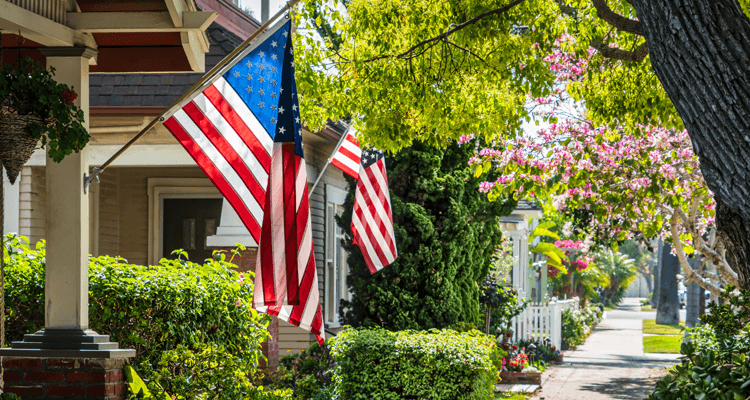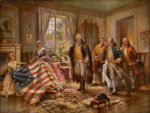Old Glory. The Red, White, and Blue. Stars and Stripes. The Star Spangled Banner. These are all nicknames for the Flag of the United States of America—which is the official name for this U.S. patriotic symbol. People choose to display the flag at their homes for a variety of reasons, but most commonly on Flag Day (June 14), Independence Day (July 4), and Memorial Day, along with a number of other flag-flying holidays. Any of these days when the flag will be displayed is a good learning opportunity for parents to teach their children the importance and history of the American flag as well as how to display it and handle it with respect and honor.
Rules for Proper Flag Display
Perhaps the most important lesson parents can teach their children about the U.S. flag is that it is much more than a piece of cloth. The flag is a symbol of freedom and democracy, and a solemn reminder of the millions of men and women who have (and will) sacrifice their lives in service of the United States and its citizens; it should be treated accordingly. Here are some rules for doing that.
-
- Display the American flag outside between the hours of sunrise and sunset. The flag may be displayed during darkness as long as it is properly illuminated—with a spotlight, for example.
-
- Hoist the flag quickly and lower it ceremoniously.
-
- When displaying the flag full-staff from a pole that projects horizontally or at an angle from a windowsill, balcony, or front of a building, place the union of the flag (the blue rectangle) at the peak of the staff.
-
- When flying the U.S. flag in combination with other flags (such as a state flag), the U.S. flag should be placed higher than all others.
-
- To fold the flag, begin by folding it in half widthwise twice with the blue field ending up on the outside. Then fold up a triangle beginning at the striped end. Repeat this folding until only the end of the union shows. Then, fold down the square into a triangle and tuck in the folds.
- When a flag reaches the condition when it’s no longer appropriate for displaying, destroy it in a dignified way; burning is preferable.
What to Avoid When Displaying the American Flag
Many instances of improper flag etiquette stem not from a desire to disparage the flag and what it symbolizes, but from ignorance of proper flag protocol. Some flag don’ts are obvious: do not mutilate, deface, defile, burn, or trample the U.S. flag. In fact, any of the aforementioned actions are illegal and violators may be subject to fines and/or jail time. Other flag rules may be less obvious. All are noted in the law known as the U.S. Flag Code. They include:
-
- Don’t fly the flag in darkness unless it is illuminated.
-
- Don’t fly the flag in inclement weather (unless the flag is made of all-weather material.)
-
- Don’t dip the flag for another flag, person, or vessel.
-
- Don’t display the flag on a float in a parade unless it’s hung from a staff.
-
- Don’t let the U.S. flag touch the ground.
-
- Don’t fly the U.S. flag upside down.
-
- Don’t use the flag for any advertising purposes.
-
- Don’t embroider or print an image of the U.S. flag on anything that’s designed for temporary use (napkins, boxes, handkerchiefs, etc.)
-
- Don’t wear the U.S. flag as clothing.
-
- Don’t use the flag as a ceiling covering.
-
- Don’t use the flag as a vessel to carry things in.
-
- Don’t restrict the flag by pinning, fastening, or tying it back; always let it hang free.
- Don’t allow the flag to become dirty or mark or draw on it.




































